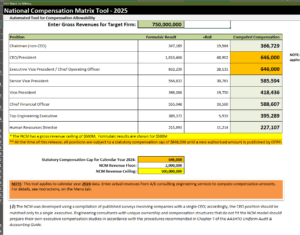2025 National Compensation Matrix
Maximize Your FAR-allowable Overhead Rates with the 2025 National Compensation Matrix
 The American Association of State Highway and Transportation Officials (AASHTO) has released its 2025 National Compensation Matrix (NCM).
The American Association of State Highway and Transportation Officials (AASHTO) has released its 2025 National Compensation Matrix (NCM).
Why Use the 2025 NCM?
- Accurately calculate FAR-allowable overhead rates.
- Maximize your profitability on government contracts.
- Ensure compliance with AASHTO guidelines.
- Gain a competitive edge in bidding.
Need Expert Help?
 SN’s Director of Government Contract Services, Tony Machi, CPA, MBA, is ready to provide expert support and guidance. Tony’s extensive network within the state departments of transportation, AASHTO, and ACEC communities allows him to provide an impartial interpretation of the Federal Acquisition Regulation (FAR) across the country.
SN’s Director of Government Contract Services, Tony Machi, CPA, MBA, is ready to provide expert support and guidance. Tony’s extensive network within the state departments of transportation, AASHTO, and ACEC communities allows him to provide an impartial interpretation of the Federal Acquisition Regulation (FAR) across the country.